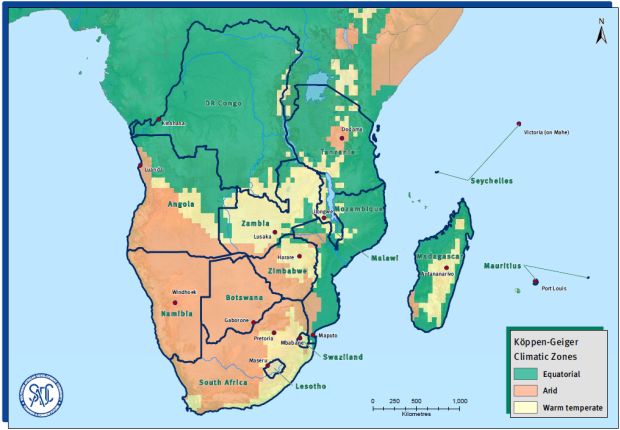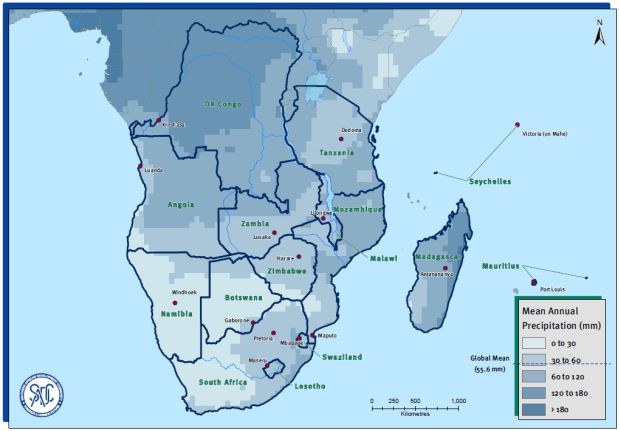Weather and climate affect many aspects of life in Southern Africa. As much of the region relies on subsistence Agriculture for their income, accurate predictions of weather patterns are instrumental to many people’s livelihoods. Furthermore, unstable weather patterns affect plans for Industry, Energy Generation, and Transport throughout the region.
These effects can threaten SADC goals of stronger Regional Integration and Economic Development. As a result, SADC has instituted a number of programmes and agreements to mitigate these threats, in particular the Protocol on Transport, Communications and Meteorology.
Climate in Southern Africa
The climate of the SADC region ranges from arid to sub-humid. Droughts are common in the arid and semi-arid regions, and heavy rainfalls following periods of drought can cause severe flooding. Three primary wind systems affect the region:
- The Sub-Tropical Eastern Continental Moist Maritime System, which experiences regular cyclones;
- The Southeasterly Wind System, which brings rainfall from the Indian Ocean; and
- The Inter-tropical Convergence Zone, which contributes to the wet and dry seasons of tropical regions.
Fluctuations in climate – specifically, changes in rainfall amounts – have also been linked to the El Niño–Southern Oscillation phenomenon.
Climate change presents a significant threat to the SADC region as it is expected to increase the frequency and intensity of climatic events. Predicted higher temperatures, altered rainfall patterns, and an overall decrease in rainfall will have serious consequences for the region. The ability to forecast weather can help governments and communities prepare for, and reduce these potential negative impacts, of adverse weather events. Therefore, SADC Member States are collaborating to find ways to adapt to, and mitigate, the effects of climate change in the region. Read more about Climate Change Adaptation and Mitigation activities in SADC.
Köppen-Geiger Climate Classification for SADC

Mean Annual Precipitation in SADC

Climate and Meteorology Initiatives
SADC has identified the following areas of focus as priorities related to meteorology and climate:
Meteorology
Weather forecasting is important to help Member States plan for events such as droughts, floods, and cyclones. SADC works with Member States to improve infrastructure and capacity in meteorology.
Climate Information
The SADC Climate Services Centre (CSC) and the SADC Regional Climate Outlook Forum work to release long-term climate forecasts to the general public and to sectors that may be impacted negatively by weather-related events.
Climate Change Adaptation
Africa is predicted to be the continent most vulnerable to the impacts of climate change.
Climate Change Mitigation
SADC has an opportunity to contribute to regional and global efforts to mitigate the effects of climate change.
